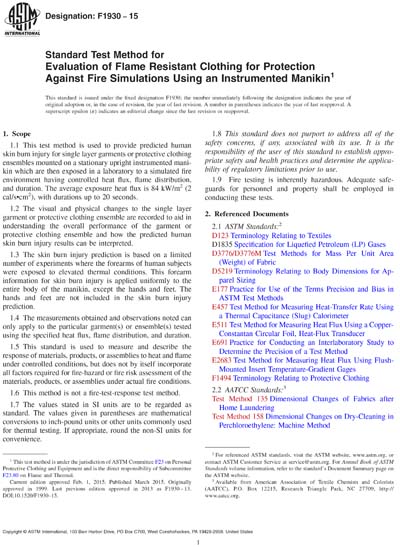Historical
ASTM F1930-15
Standard Test Method for Evaluation of Flame Resistant Clothing for Protection Against Fire Simulations Using an Instrumented Manikin
1.1 This test method is used to provide predicted human skin burn injury for single layer garments or protective clothing ensembles mounted on a stationary upright instrumented manikin which are then exposed in a laboratory to a simulated fire environment having controlled heat flux, flame distribution, and duration. The average exposure heat flux is 84 kW/m2 (2 cal/s•cm2), with durations up to 20 seconds.
1.2 The visual and physical changes to the single layer garment or protective clothing ensemble are recorded to aid in understanding the overall performance of the garment or protective clothing ensemble and how the predicted human skin burn injury results can be interpreted.
1.3 The skin burn injury prediction is based on a limited number of experiments where the forearms of human subjects were exposed to elevated thermal conditions. This forearm information for skin burn injury is applied uniformly to the entire body of the manikin, except the hands and feet. The hands and feet are not included in the skin burn injury prediction.
1.4 The measurements obtained and observations noted can only apply to the particular garment(s) or ensemble(s) tested using the specified heat flux, flame distribution, and duration.
Content Provider
ASTM International [astm]






